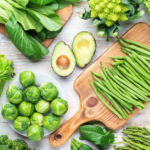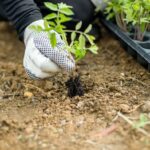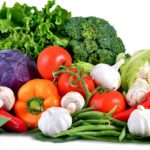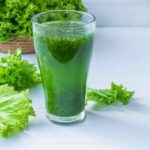If you want to ensure Vegetables to plant October, start planning and planting in the fall. October is a great time to get a head start on your garden.
Here, we’ll learn the top vegetables to plant in October, including cool-season crops like broccoli, spinach, and kale, as well as root vegetables like carrots and beets.
Here are 15 Vegetables to plant October:
Broccoli
Cabbage
Carrots
Cauliflower
Garlic
Kale
Lettuce
Onions
Peas
Radishes
Spinach
Swiss chard
Turnips
Winter squash
Brussels sprouts
Vegetables to plant October:
Broccoli

Broccoli is a cool-season crop that can be planted in October for a spring harvest. Broccoli plants prefer well-drained, fertile soil that has a pH between 6.0 and 7.0.
Planting broccoli in October, choose a variety that is suitable for your climate and growing conditions. Some popular broccoli varieties include Green Goliath, Belstar, and Waltham 29.
You can start your broccoli seeds indoors about six weeks before the first expected frost, and then transplant the seedlings into your garden once they are large enough.
With proper care, you can enjoy a delicious and nutritious harvest of fresh broccoli from your garden.
Cabbage

Cabbage is another cool-season crop that can be planted in October for a spring harvest. Cabbage plants prefer well-drained soil that is rich in organic matter, with a pH between 6.0 and 7.0.
Cabbage plants should be spaced about 18-24 inches apart, and you can expect to harvest your cabbage in the spring, once the heads are fully formed and firm.
Cabbage can be used in a variety of dishes, including salads, coleslaw, and stir-fries, making it a versatile and nutritious addition to your garden.
Carrots

Carrots are a root vegetable that can be planted in October for a late fall or early winter harvest. Carrots prefer soil that is soft, well-drained, and free of pebbles and other objects.
You can sow your carrot seeds directly into the soil, making sure to plant them at a depth of about ¼ inch and spacing them about 2-3 inches apart.
Once your carrot seedlings emerge, you’ll need to thin them out to about 1-2 inches apart to give them room to grow. You may also need to fertilize your carrot plants with a balanced fertilizer every few weeks.
Carrots can be used in various dishes, including salads, soups, and stews, making them a tasty and versatile addition to your garden.
Cauliflower

Cauliflower is a cool-season crop that can be planted in October for a spring harvest. Like other members of the Brassica family, cauliflower prefers well-drained, fertile soil that is rich in organic matter, with a pH between 6.0 and 7.0.
Cauliflower plants should be spaced about 18-24 inches apart, and you can expect to harvest your cauliflower in the spring, once the heads are fully formed and tight.
Cauliflower can be used in a variety of dishes, including roasted cauliflower, cauliflower rice, and cauliflower soup, making it a delicious and nutritious addition to your garden.
Garlic

Garlic is a bulb vegetable that can be planted in October for a summer harvest. Garlic prefers loose, well-drained soil that is rich in organic matter, with a pH between 6.0 and 7.0.
Once your garlic has been planted, you’ll need to cover the area with a layer of mulch to help protect the bulbs from cold temperatures.
Garlic can be used in various dishes, including garlic bread, pasta dishes, and soups, making it a flavorful and versatile addition to your garden.
Kale

Kale is a leafy green vegetable that can be planted in October for a late fall or winter harvest. Kale prefers well-drained soil that is rich in organic matter, with a pH between 6.0 and 7.0.
You can sow your kale seeds directly into the soil, making sure to plant them at a depth of about ¼ inch and spacing them about 12-18 inches apart.
Once your kale seedlings emerge, you’ll need to thin them out to about 8-12 inches apart to give them room to grow.
Kale can be used in various dishes, including salads, smoothies, and soups, making it a nutritious and versatile addition to your garden.
Lettuce

Lettuce is a leafy green vegetable that can be planted in October for a late fall or early winter harvest. Lettuce prefers well-drained soil that is rich in organic matter, with a pH between 6.0 and 7.0.
You can sow your lettuce seeds directly into the soil, making sure to plant them at a depth of about ¼ inch and spacing them about 6-12 inches apart. Once your lettuce seedlings emerge, you’ll need to thin them out to about 6-8 inches apart to give them room to grow.
Lettuce can be used in various dishes, including salads, sandwiches, and wraps, making it a delicious and versatile addition to your garden.
Onions

Onions are a bulb vegetable that can be planted in October for a summer harvest. Onions prefer well-drained soil that is rich in organic matter, with a pH between 6.0 and 7.0.
You can plant onion sets (small bulbs) directly into the soil, making sure to plant them about 1-2 inches deep and spacing them about 4-6 inches apart.
Onions can be used in a variety of dishes, including soups, stews, and stir-fries, making them a flavorful and versatile addition to your garden
Peas

Peas are cool-weather vegetable that can be planted in October for a late fall or winter harvest. Peas prefer well-drained soil that is rich in organic matter, with a pH between 6.0 and 7.0.
When planting peas in October, it’s important to choose a variety that is suitable for your growing conditions. Some popular pea varieties include Sugar Snap, Snow Pea, and English Pea.
You can sow your pea seeds directly into the soil, making sure to plant them at a depth of about 1 inch and spacing them about 2-3 inches apart.
Peas can be used in various dishes, including salads, stir-fries, and soups, making them a tasty and versatile addition to your garden.
Radishes

Radishes are root vegetable that can be planted in October for a late fall or winter harvest. Radishes prefer well-drained soil that is rich in organic matter, with a pH between 6.0 and 7.0.
You can sow your radish seeds directly into the soil, making sure to plant them at a depth of about ½ inch and spacing them about 2-3 inches apart. Once your radish seedlings emerge, you’ll need to thin them out to about 2-3 inches apart to give them room to grow.
Radishes can be used in various dishes, including salads, sandwiches, and pickled snacks, making them a flavorful and versatile addition to your garden.
Spinach

Spinach is a leafy green vegetable that can be planted in October for a late fall or winter harvest. Spinach prefers well-drained soil that is rich in organic matter, with a pH between 6.0 and 7.0.
You can sow your spinach seeds directly into the soil, making sure to plant them at a depth of about ½ inch and spacing them about 2-3 inches apart. Once your spinach seedlings emerge, you’ll need to thin them out to about 6-8 inches apart to give them room to grow.
Spinach can be used in various dishes, including salads, smoothies, and cooked dishes, making it a nutritious and versatile addition to your garden.
Swiss chard

Swiss chard is a leafy green vegetable that can be planted in October for a late fall or winter harvest. Swiss chard prefers well-drained soil that is rich in organic matter, with a pH between 6.0 and 7.0.
You can sow your Swiss chard seeds directly into the soil, making sure to plant them at a depth of about ½ inch and spacing them about 6 inches apart. Once your Swiss chard seedlings emerge, you’ll need to thin them out to about 12 inches apart to give them room to grow.
Swiss chard can be used in various dishes, including salads, stir-fries, and cooked dishes, making it a nutritious and versatile addition to your garden.
Turnips

Turnips are a root vegetable that can be planted in October for a late fall or winter harvest. Turnips prefer well-drained soil that is rich in organic matter, with a pH between 6.0 and 7.0.
You can sow your turnip seeds directly into the soil, making sure to plant them at a depth of about ½ inch and spacing them about 2-3 inches apart. Once your turnip seedlings emerge, you’ll need to thin them out to about 4-6 inches apart to give them room to grow.
Turnips can be used in various dishes, including stews, soups, and roasted vegetable dishes, making them a flavorful and versatile addition to your garden.
Winter squash
Winter squash is a hard-skinned vegetable that can be planted in October for a late fall or winter harvest. Winter squash prefers well-drained soil that is rich in organic matter, with a pH between 6.0 and 7.0.
You can sow your winter squash seeds directly into the soil, making sure to plant them at a depth of about 1 inch and spacing them about 2-3 feet apart. Once your winter squash seedlings emerge, you’ll need to thin them out to about one plant per hill or 3-4 feet apart to give them room to grow.
Winter squash can be used in various dishes, including soups, stews, roasted vegetable dishes, and even desserts, making them a delicious and versatile addition to your garden.
Brussels sprouts
Brussels sprouts are a cold-hardy vegetable that can be planted in October for a late fall or winter harvest. Brussels sprouts prefer well-drained soil that is rich in organic matter, with a pH between 6.0 and 7.5.
You can sow your Brussels sprouts seeds directly into the soil, making sure to plant them at a depth of about ½ inch and spacing them about 2 feet apart. Once your Brussels sprouts seedlings emerge, you’ll need to thin them out to about 1-2 feet apart to give them room to grow.
Brussels sprouts are a nutritious and flavorful addition to your garden, and can be roasted, grilled, or sautéed to create a variety of delicious dishes.













One thought on “Top 15 Vegetables to plant October start your garden now”